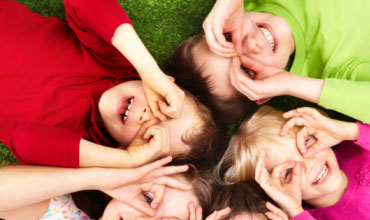Childhood is a vital time in the development of eyes as it is when many vision problems may develop; hence it is important that children regularly come in for a routine eye exam.
Often times, children’s eye problems go undetected as symptoms are either missed all together or are misdiagnosed as being behavioural problems. If these vision problems are caught early enough, they can be treated and prevented.
It is good to start booking your children in for regular eye exams between the ages of 6 months to 1 year old, but it is recommended that if there is a family history of eye diseases and conditions, such as a lazy eye, a visual eye exam can be preformed earlier.
Common symptoms in children with visual problems include headaches, fatigue, blurred vision, and eyestrain as the child’s eyes would have to work harder than what is needed.
Current research today indicates that 80% of a child’s learning is visual, hence, if untreated; visual problems will affect a child’s ability to learn and perform in school.
Common vision problems in children include: myopia/ near-sightedness (difficulty seeing objects far away), Hyperopia/ far-sightedness (difficulty seeing objects close-up), and astigmatism (blurred vision and difficulty seeing fine detail).
Paying attention to your children’s vision will help contribute to their success in school and pave the path for a bright future. Children deserve good vision, and thus we must do all that we can to ensure that their eyes are healthy and well maintained.
All children are covered by the Ministry of Health up to the age of 19 years old. Meaning children 19 years and younger are eligible for a free eye exam every year. So be sure to regularly book your children in for a routine eye exam each year.
If you have any further questions about your child’s eye health, I will be more than wiling to go through these questions with you, and also provide some information brochures on the importance of children’s eye health.
